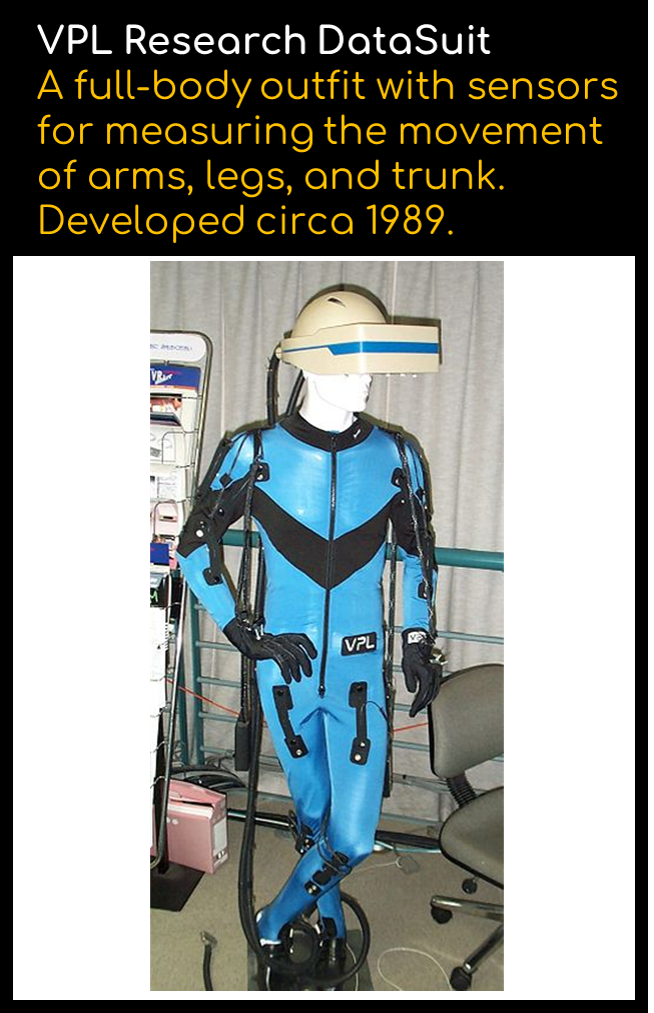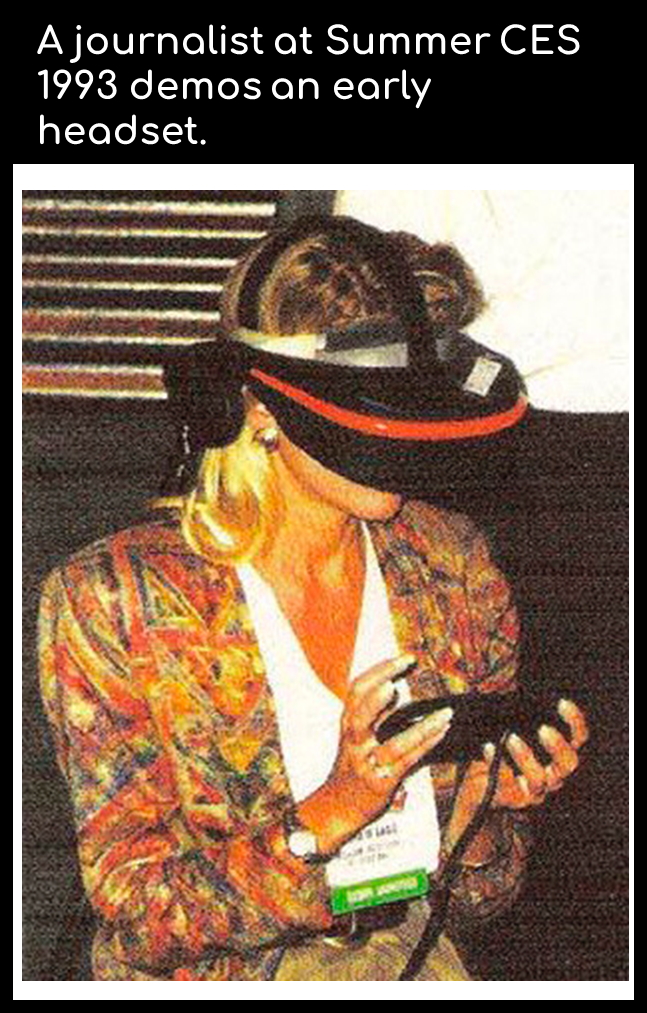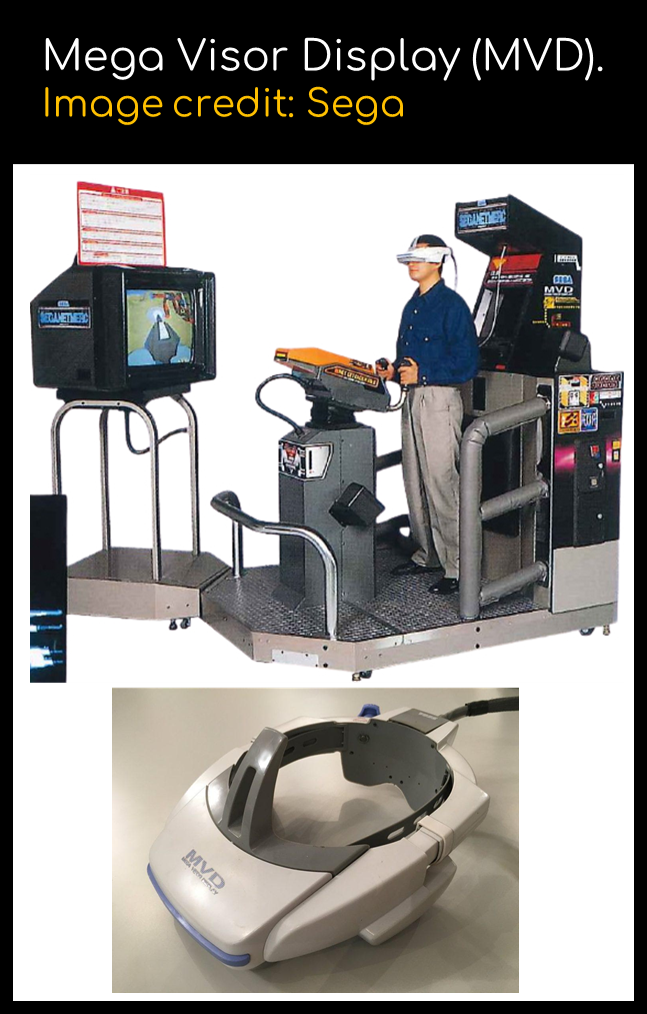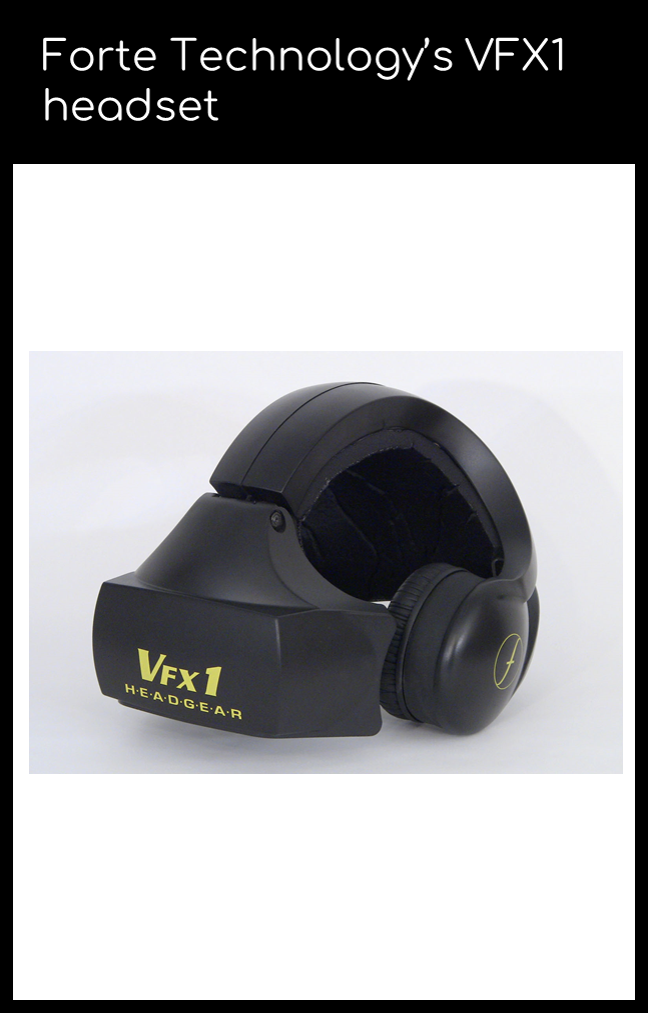The 90’s were an exciting time for computing and one of the most revolutionary technologies was virtual reality, this Atlas returns to the elements in the 90s that played significant roles in advancing VR technology and driving current VR adoption. Mapped out in this Atlas is a brief history of veteran console & VR games producer SEGA's first endeavor in making the SegaVR headset, as well as how other early VR pioneers' efforts in developing the technology shaped an underappreciated yet groundbreaking experience.
1990 Bankruptcy - VPL Research
The 90s opened with VPL research ( aka Virtual Programming Languages), the first company to sell VR goggles and gloves filing for bankruptcy. Their gloves called “Data Glove'' sensed the user's finger movement and translated it into computer input, this was indeed an impressive invention for it’s time. With such an opening to the decade, VR still saw some players doubling down.

SegaVR: The lost dream.
In 1991 Sega Corporation, a Japanese multinational video game and entertainment company, who in the 90s made popular video and console games such a Mortal Kombat, Street Fighter II, Disney’s Aladdin, Sonic the Hedgehog and many other popular titles announced the release of their VR headset, which they planned as a add-on peripheral, i.e. it isn’t a standalone headset and would have needed to be connected to an external source, be it PC or console. This was no doubt an exciting news for both gamers and tech enthusiasts at the time, not only did Sega have the resources at the time to at least present an image that they could do it, they also had many popular video and console games already making waves.
Unfortunately for them, the VR concept and technology was underdeveloped back then, and hardwares needed to render close to realistic scenes were very expensive, the Head Mounted display (HMD) release date had to be postponed and finally completely canceled. Although the company publicly showcased the Headset at a few events, the public never got the opportunity to buy or use the device.

Looking at the huge gap between VR headsets made then compared to the ones made now, also at the numerous reports of motion sickness, headaches and other medical issues associated with the headset, it was probably for the best that it was never released.
Mega Visor Display (MVD) - VR-1
While Sega of America developed the ultimately never released Sega VR Headsets, Sega of Japan sought outside help for their own separate virtual reality endeavors. They partnered with Virtuality, one of the biggest and successful names in VR in the 90s who were leaders in VR deployment in the amusement industry, which was booming in the 90s.
Both companies after coming together shared their patented technology, unique display, optics designs & talent, and after a few iterations they came up with the Mega Visor display(MVD) , one of the most structurally sound head-mounted displays at the time of its release.

When originally released, the MVD could output real-time 3D graphics and pre-rendered films at a 756 x 244 pixel resolution with a 60°(H) x 46.87°(V) field of view, allowing riders to view a 360 degree landscape, it also weighed about 640 grams (for context Meta’s popular Quest 2 weighs 503 grams), these are quite impressive specs for something made so long ago!
Sega was very focused on their Amusement Theme Parks (Sega World) in the 90s, and one of their biggest successes was opening VR-1: an interactive virtual reality amusement park attraction. While little is known about the computer hardware VR-1 experience ran on, the three main elements of the ride were its Mega Visor Display, motion simulators, and software. Which were unified to create “near-total immersion” for riders. Pretty cool even by today’s standards.
Forte Technology’s VFX1 headset (1995)
The forte VFX1 was by far one of the best consumer-level head-mounted displays of the 90s, It comprised a helmet, a handheld controller, and offered head tracking, stereoscopic 3D, and stereo audio. It was sold for $995 (equivalent to $1690 in 2020) and Forte spent over 5 years developing the technology.

To illustrate the marketing campaign for Forte Technology's VFX1 headset (1995), the company hired a hip-looking fellow in skintight bronze pants to wander the streets of what looks like Germany, or perhaps London, and crouch and make weird gesticulations. Traumatized passers-by still wonder what they saw that day. Later, Forte also hired a model to wear silver spandex and act like a VR scarecrow, scaring away many potential customers during a rock video shoot.
Lesson learnt
One thing is sure, creators, enthusiasts, engineers, developers and teams get to define the direction the evolution of most technology, especially VR. All the amazing things Sega, Forte and Virtuality did, in their failures and successes contributed into making virtual reality technology what it is today. But some of the struggles from that time echoes into these times also, although VR headsets are more immersive than they were in the 90s some of the same problems exist, one of which is the fear that as VR becomes more and more mainstream it will fuel escapism amongst the masses, many of these will be addressed in subsequent atlases. It also goes without saying that virtual reality has entered a new phase in its technological journey compared to two decades ago, the technology is far more advance, not only are the headsets more immersive, VR experiences are even being delivered on mobile, PC & the Web, extending the reach of the technology and its impacts in that respect.
XR Atlas Nugget
The term “Virtual Reality” was conceived by Jaron Lanier in 1987, during an intense period of research around this form of technology. Jaron formed VPL Research, the company who at the beginning of this atlas was said to be the first to sell VR goggles and gloves, which also went bankrupt at the beginning of the 90s. It is important to note that while immersive experiences (depending on the definition) have been around for decades, the actual terms most people use to describe them are relatively new.
Bibliography:
1) Sega VR
2) Enjoy some 90s VR videos: Virtuality VR LBE VR Game Promotional Video (1990s).
3) The Virtual Arena – Blast from the Past: The VR-1 - GMW3
